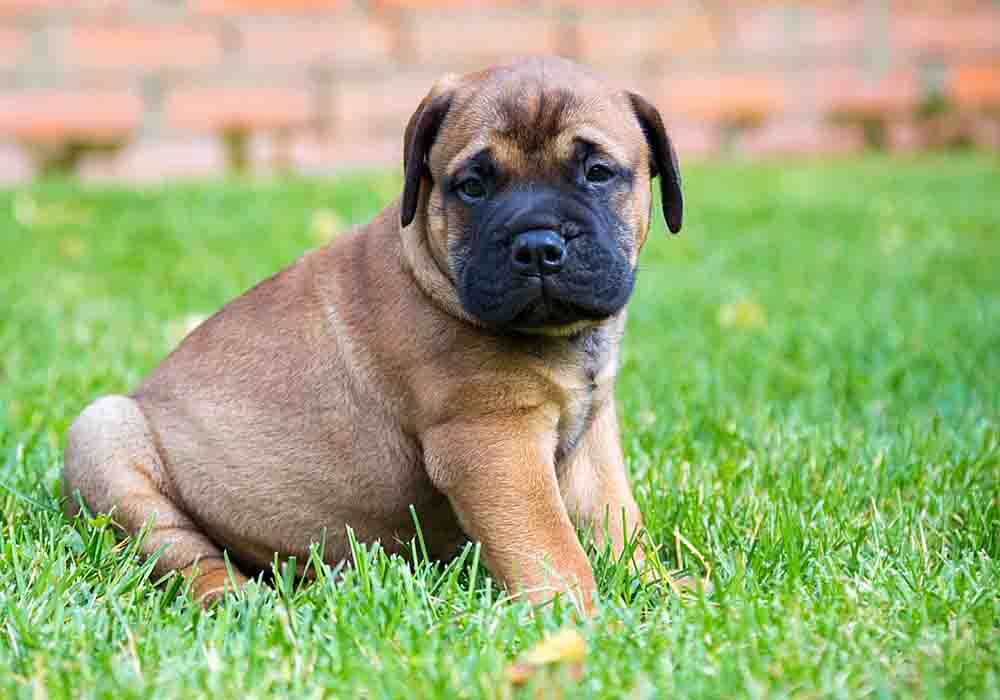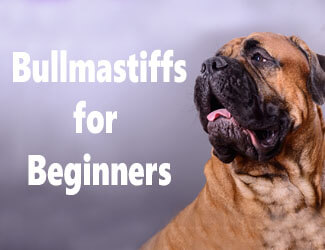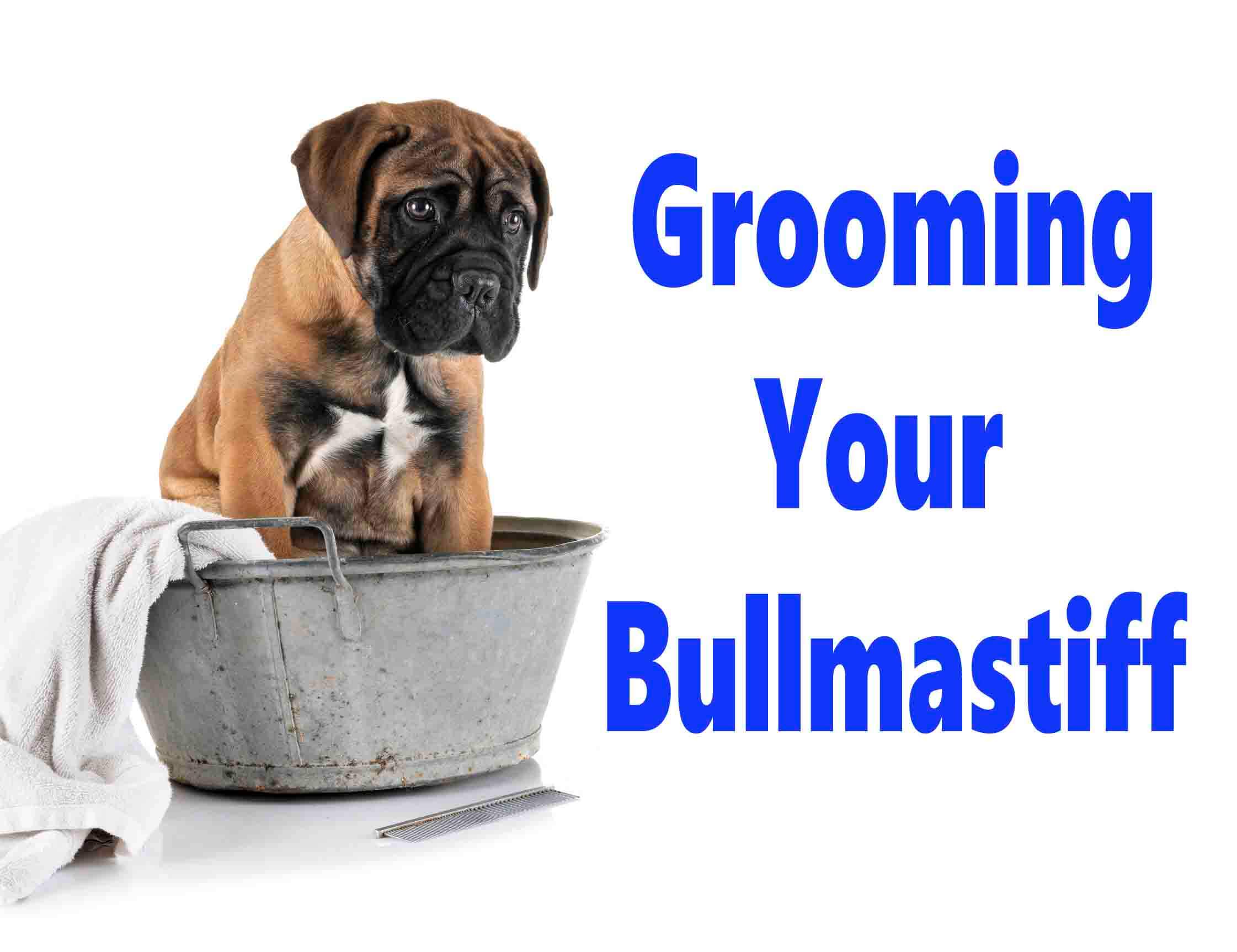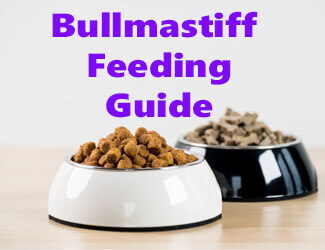What To Look For
In A Bullmastiff Puppy
Learn Their Physical And Personality Characteristics
by Ken Alden
Known as the Gamekeeper’s Night Dog, the Bullmastiff is a big lug of canine prowess that offers both protection and friendship. Certain people choose it to match their personalities. If you’re one of them, you may want to familiarize yourself with the breed first before acquiring one.
Here’s what to look for in a Bullmastiff puppy…
The American Kennel Club standards outline says they should have a red, fawn, or brindle coat without white markings, a flat face with a short muzzle, and the breed’s hallmark, a black mask. To ensure genetic purity, ask the breeder for certification of lineage.
Continue reading to know more about the Bullmastiff and select one from a breeder or a rescue organization. We’ve compiled information from various sources and won’t mince words. We give you the good, the bad, and the ugly in this breed.
Read More Below...
Pro-tip: Ever try lifting a Bullmastiff? Their weight can hurt not only your back but their joints when they hop down from cars, sofas or even your bed. To protect your back and theirs check out the best Mastiff ramps on Amazon.com now.

Bullmastiff Characteristics To Look For
If you want a genuine Bullmastiff, look for the characteristics that make up this brachycephalic breed, which are as follows: a broad, short skull with the breadth of at least 80% of the length and a flat face, although not as extreme as a Pug’s.
Additional distinctive physical characteristics include a black mask on the face and a big, strong, muscular, powerful build. See the breed’s profile for its other physical qualities.
Bullmastiffs are intelligent dogs. Their loyalty, protectiveness, and willingness to please make them ideal family companions and protectors. They are agile, confident, and active, yet obedient and conforming. They are great at carting, tracking, and therapy work.
Profile Attributes To Look For In A Bullmastiff
- Breed group: working dog
- Eye color: hazel
- Nose color: black
- Coat color: red, fawn, or brindle
Fawn has become more common recently. In the past, brindle coats were popular because Bullmastiffs were used as night guard dogs, and darker fur acted as camouflage. what to look for in a bullmastiff puppy
- Life span: 8-10 years
- Weight: 85-130 pounds; males larger than females
- Height: 22-27 inches at the shoulder. Bullmastiffs don’t stop growing until their second birthday. They are quite energetic as puppies, but when they turn two years old, they become mellow enough to live contentedly in an apartment or condo, provided they get daily walks.
- Annoying habits: They drool and snore.
Pro-tip: Bullmastiff anxiety, aggression, destructive chewing, jumping up, fearfulness, and other behaviors can be controlled with the right training program.
Here’s a great course that
addresses these issues along with many other dog training basics: Check it out now!
Bullmastiff Personality Traits To Look For And Out For
The cute aspect - On the positive side, Bullmastiffs are doting, devoted, and loyal if raised by the same family from infancy. Despite their fearless demeanor, they’re docile and good-natured with their human families. They can tolerate other pets and children. Adult Bullmastiffs are better suited with older kids, though, as they can inadvertently knock down smaller ones because of their size.
The naughty facet - On the flip side, they have stubborn personalities. They are fiercely protective of their owners but aggressive toward intruders or strange animals. They don’t like being left alone for a long time. Their stubbornness may cause issues, like trashing their surroundings or nibbling on shoes.
Affectionate behavior - Bullmastiffs lean on people because they want to get close. Dogs are social pack animals, and most enjoy physical contact. Unlike smaller dogs that can be picked up, larger ones, if not cuddled, have to make do with leaning against their owners, much like cats that wrap themselves around people’s legs.
Bullmastiff Health Concerns To Be Ready For
Common Illnesses - Bullmastiffs are prone to hereditary diseases, including arthritis, entropion, lymphoma, hypothyroidism, progressive retinal atrophy, elbow dysplasia, and hip dysplasia. Not all Bullmastiffs will get these, but be aware if you’re considering this breed. As some health conditions don’t manifest until the dog is fully mature, health clearances aren’t issued to dogs younger than two.
Diet - Provide proper nutrition through vitamins, healthy treats, and a well-balanced diet of 3-4 cups of high-quality dog food twice daily. The amount depends on age, size, metabolism, build, and activity level. Measure food instead of leaving out indeterminate amounts. The monthly food consumption cost is $40-$60.
Exercise - When kept indoors, Bullmastiffs become lazy and inactive. Though some are happy in an apartment, their ideal accommodation is a house with lots of outdoor space. Therefore, physical activity is necessary for weight and joint health management. The UK Kennel Club recommends an hour of daily exercise, but walks should be gentle and short, especially from infancy to two years old.
Hygiene - Despite their short hair, Bullmastiffs need regular bathing and grooming twice weekly for healthy skin and minimal shedding. Indoor dogs need a weekly bath; outdoor ones, every three days. The frequency depends on the lifestyle and activity level. Their coats need constant brushing, and their folds need thorough cleaning. Use a conditioning shampoo for dry skin and antibacterial soap to treat infections.
Bullmastiff Training Difficulties To Prepare For
Independent Bullmastiffs don’t respond to traditional obedience training. Owners must constantly remind them of their authority. Otherwise, the pets will dominate the home and resist direction. what to look for in a bullmastiff puppy
Bullmastiffs, like all large dogs, should be socialized and go through obedience training at a young age. They don’t need specialized guard training because they respond instinctively if their families are threatened.
If you can’t train them yourself, enroll them in a school or hire a trainer. Ideally, trainers should be members of organizations like the Association of Pet Dog Trainers.
Look For These Tendencies Before Acquiring A Bullmastiff
The Bullmastiff is usually aggressive toward other dogs of the same gender. If not appropriately trained, they can destroy property or seriously injure other animals. Potential owners must be aware of this breed’s reputation.
In the USA, the Bullmastiff ranks sixth in the 10 Most Dangerous Dog Breeds report, as it has been involved in fatalities related to attacks on humans. An analysis of dog bite fatalities over 13 years identifies the breed as one of those that killed 433 Americans. Bullmastiffs caused approximately 5% of fatal dog attacks in 2014 and 3.2% from 2005 to 2017.
In the UK, Bullmastiffs are not classed as dangerous dogs under British legislation, but people often confuse them with pit bulls or bull terriers.
In Australia, Bullmastiffs are considered one of the most dangerous canine
breeds. RSPCA President Hugh Wirth attributes this to the breed’s history of
having been bred in Australia to subdue wild boar and other large animals.
If You’re Looking For A Guard Dog, Know This
Although Bullmastiffs were bred to discourage intruders, they’re not well known for their bites. They usually bark, growl, and stand their ground long before they bite. Owners should introduce newcomers to their Bullmastiffs to show they’re not a threat. Regardless, prepare safety measures, like strong leashes and reinforced training, to stop an attack before it starts.
Pro-tip: Bullmastiff's (and their owners) love dog crates…and for good reasons. Crates keep dogs from mischief while you're away, are perfect for house training, for traveling by car, and provide the dog a place to de-stress. Check out the best Mastiff crates on Amazon.com now.
How To Pick A Bullmastiff Puppy
If
you want to follow AKC standards, ask the breeder for
certification, proving you’re getting a genuine large breed and not a
contaminated Bullmastiff, even if it exhibits excellent physical health.
- Male or female? Surprisingly, most squabbles originate from females brought together. Males, possibly craving more attention, are affectionate, reliable, attentive, and less driven to moodiness.
- Companion or guard dog? Bullmastiffs silently watch and guard. They belong to the largest of the breeds that rarely bark. They were bred to be ferocious but also quiet, as silence was valued when guarding estates. Their bravery and alertness make them perfect guard dogs. Their breed is popular with the army, defense, and police forces. However, they’re also loving pets.
Where Can I Buy A Bullmastiff Puppy?
Since a purebred puppy costs around $1,000, it’s safest to purchase from legitimate breeders than individual advertisers. Reputable breeders are affiliated with veterinarians, educate you about the breed, show you their facilities, and ask you to submit requirements and spend time with the puppy before allowing purchase. This is to ensure their wards go to responsible dog parents.
Where Bullmastiffs are sold:
- The American Kennel Club’s Marketplace
- Black River Bullmastiff Breeders Males ... Females
- Bullguard Bullmastiffs
- Lonely Creek Kennels
Where Can I Adopt A Bullmastiff Puppy?
- American Bullmastiff Association Rescue Service
- Rescue Me has a clickable online map that lists Bullmastiffs per state. Some advertisers charge adoption fees.
- This database lists US Bullmastiff rescues by state and international ones by country.
- Petfinder’s adoption database
What To Look For In A Bullmastiff Puppy...Final Thoughts
To ensure you get a high-quality breed, secure your Bullmastiff from reputable breeders or recognized rescue agencies. The former usually prepare their dogs to adopt the best temperament before providing them new homes. Apart from vets, they are also the most knowledgeable about the breed.
Regulated rescue organizations have a reputation to protect. This ensures safety standards when rehoming animals.
We hope this article will help unite you with a new family member who will stick with you through the best and worst times of your life.
Return to the top of this What To Look For In A Bullmastiff Puppy page

About the Author...
Ken Alden, a dedicated Mastiff owner for over eight years, is acclaimed for his expertise in care, grooming, and training. Read more About Me and my dog Shadow.
- Mastiff Guide Home ›
- Bullmastiffs ›
- What To Look For In A Bullmastiff Puppy








